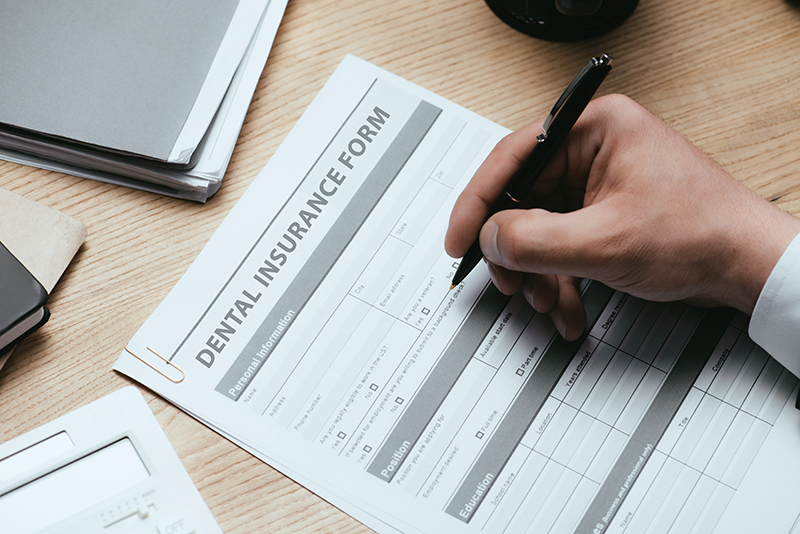Verifying dental insurance is a crucial step in the billing process that has a significant impact on a dental practice’s cash flow and patient satisfaction. Insurance verification involves confirming a patient’s insurance benefits and coverage before providing treatment, ensuring a smooth and successful billing for both the practice and the patient. However, accurately verifying patient eligibility is crucial to prevent unexpected out-of-pocket costs for patients and reduce the risk of insurance claim denials. That’s why most practices rely on dental insurance verification specialists to implement best practices and avoid errors.
This post delves into the common dental insurance verification errors and strategies to avoid them.
Eliminate claim denials and streamline your front-office workflow with expert dental insurance verification!
Verifying Patient Dental Insurance Eligibility: Five Errors to Watch Out For
- Not Verifying Patient Coverage in Advance of the Office Visit
Failing to verify a patient’s insurance coverage before their appointment is one of the most frequent and costly mistakes in dental practices. Without prior verification, staff may discover only after services are rendered that:
- The patient’s policy is inactive
- Benefit maximums have been already reached
- Treatment is subject to a waiting period
- Deductibles not met
- The provider is out-of-network
- Certain procedures are not covered
This leads to claim denials, billing delays, and unexpected out-of-pocket expenses for patients—damaging trust and practice revenue.
- Relying on Predeterminations for Out-of-Pocket Estimates
Predeterminations estimate a patient’s out-of-pocket costs based on the insurer’s response to the proposed treatment. These pre-treatment estimates can be helpful to understand a patient’s eligibility, covered services, amounts payable, co-payment and deductibles, and plan maximums. However, it’s a mistake to rely solely on these predeterminations for final cost projections due the following reasons.
- Predeterminations are not always accurate: Insurers may approve a procedure in a predetermination, but later deny or alter coverage once the claim is submitted due to changes in the patient’s policy, missed updates, or inconsistencies in the treatment rendered.
- Changes in benefits: A patient’s benefits might have changed between the time the predetermination was requested and the time services are actually rendered (e.g., a deductible may have been reached, or coverage may have changed).
- Inconsistent information: Predetermination estimates can sometimes be based on outdated or incomplete information, leading to discrepancies in the actual patient cost at the time of the procedure.
Best practice is to treat predeterminations as an informational tool rather than the final word on a patient’s out-of-pocket responsibility. It’s essential to double-check patient benefits in real-time to confirm coverage, copays, and deductibles.
Insurance verification provides the right information about patient benefits at the right time. It is essential to ensure that the treatment plan matches what was originally verified by the insurance company, and inform the patient of any changes in coverage or treatment before the procedure.
Missing Updates to Patient Dental Insurance Information
Failing to keep a patient’s insurance information up to date in your practice management system (PMS) is a frequent but avoidable mistake that can lead to claim denials, billing delays, and unexpected costs for patients. Insurance plans may change due to new employment, open enrollment periods, or plan terminations. If outdated information is used to file a claim, it may be rejected, requiring time-consuming follow-up and reprocessing.
The American Dental Association (ADA) highlights that, in some instances, a patient’s dental plan may not be immediately updated by the employer regarding the termination of employment and benefits. Consequently, the coverage information obtained through payer portals or call centers may not reflect the most current or accurate status. This underscores the importance of verifying eligibility on the date of service to ensure accurate billing and coverage.
How to avoid outdated information:
- Ask patients to confirm their insurance details at every visit, even if they are returning patients.
- Check the validity of insurance cards and coverage dates during the check-in process.
- Encourage patients to notify the office promptly of any employment or insurance changes.
Front-desk staff on how to identify outdated insurance information and handle updates efficiently. Implementing a policy to verify and update insurance details before every appointment can prevent billing issues.
- Failure to Navigate COB Regulations Correctly
Coordination of Benefits is when a patient is entitled to benefits from more than one dental plan. Plans will coordinate the primary and secondary insurance benefits to eliminate duplication of benefits. Incorrectly filing patient insurance coverage will result in immediate claim denial.
State laws and regulations often mandate coordination of benefits. When a patient is covered by two or more group dental plans, coordination of benefits (COB) rules apply to ensure the patient receives the maximum allowable benefit from each plan. These benefits should be combined in a way that provides greater coverage than either plan alone, potentially covering up to the full cost of the dental services received.
Staying informed about COB rules, insurance regulations, and patient coverage guidelines is crucial to carry out insurance verification more efficiently and accurately. The ADA strongly recommends that the dental office filing claims on behalf of the patient verify primary/secondary coverage by calling the customer service number on the patient’s identification card.
- Not Maintaining Proper Documentation
Failing to keep detailed documentation of insurance verification activities is a serious oversight that can create problems if claims are denied, payments are delayed, or disputes arise. Without proper documentation, your practice may struggle to prove that coverage was confirmed, leading to added administrative burden and financial risk. This can lead to
- Difficulty appealing denied claims
- Inability to verify what was communicated by the insurance payer
- Confusion or disputes with patients over benefits
- Missed reference information (e.g., names, confirmation numbers)
Best practice is to record every verification call or portal check, including the date, time, payer representative’s name, and a reference number. Keep documentation in the patient’s file or EHR system for quick reference.
- Insufficient communication with patients
A common but critical error in dental benefits verification is failing to clearly communicate with patients about their coverage, financial responsibilities, and potential out-of-pocket costs. When patients don’t fully understand their benefits or limitations, it can lead to confusion, surprise charges, and dissatisfaction. This can result in:
- Unpaid balances due to unexpected charges
- Patient frustration or loss of trust
- Increased administrative time resolving billing issues
- Appointment cancellations or treatment delays
To avoid this issue, front desk staff should explain insurance estimates clearly at the time of scheduling or check-in, emphasizing that coverage is not guaranteed. Providing written cost estimates based on verification results, including what may or may not be covered, can help patients understand their coverage. Front desk verification protocols should include communicating to patients that regardless of the estimated insurance coverage, they are ultimately responsible for the full cost of their treatment.
Maximize Efficiency: Outsource Dental Insurance Verification
Verifying patient eligibility at scheduling and before appointments is vital to maintaining a healthy dental revenue cycle.
Partnering with a dental insurance verification specialist can simplify this task and ensure several benefits:
- Accurate verifications: Experts ensure all details are checked, preventing errors that result in unexpected bills or claim denials.
- Faster payments: Early, accurate verification speeds up claims processing and reduces delays.
- Better financial performance: Verifying eligibility reduces underpayments and missed reimbursements.
- Fewer denials: Specialists catch expired policies, incorrect details, or non-covered services before claims are submitted.
- Regulatory compliance: Accurate verification supports HIPAA compliance and reduces legal risks.
- Stronger patient relationships: Patients are informed upfront about their costs, which builds trust and improves satisfaction.

At Outsource Strategies International (OSI), our team leverages insurance verification software, patient portals, and direct communication with insurers to implement best practices for dental insurance verification process. With our dental insurance verification company handling the process, you can focus on care and save time and expenses, while minimizing errors, reducing administrative load, and ensuring accurate claims submission—leading to smoother operations and faster reimbursements.
Partner with us for accurate, hassle-free dental insurance verification




